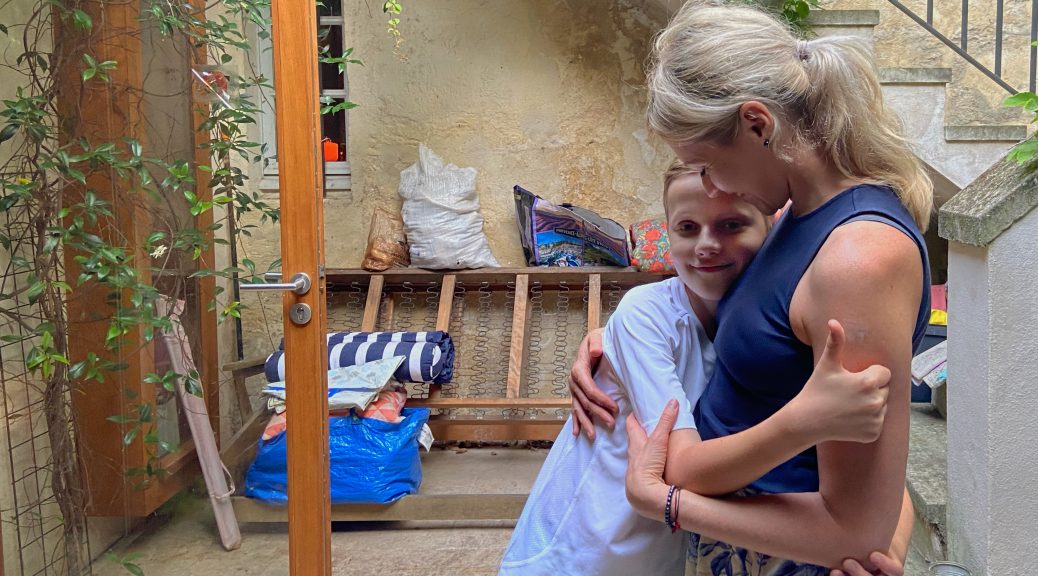Story and photos by Ella Ehlers
Long known for its cultural and historical significance, Arles is now developing a reputation as a hub for entrepreneurship. The city aids new businesses financially and supports them with resources and networking opportunities.
Using local products is an important value for many entrepreneurs here, especially for those in the food and beverage industry, who can draw from the fields of rice, lavender, durum wheat and herbs that grow in the region.
Arles holds an Entrepreneurs Day each year where new and aspiring business owners can learn everything they need to know to start and sustain their companies. The annual event begins with practical workshops on real estate, financing, and legal and tax issues. Next comes a pitch session where entrepreneurs can pose their idea to a jury of professionals and get feedback. In the afternoon, participants meet in small groups to further develop their ideas and meet potential partners.
This special day in Arles brings entrepreneurs together and lets them fully implement their business plans.
Initiative Pays d’Arles, a member of the National Initiative France network, is another source of support for entrepreneurs in Arles. Established in 1998, this initiative provides technical and financial support to entrepreneurs in the region. In 2021, Initiative Pays d’Arles supported 272 companies and gave out 1.6 million euros in no-interest loans.
Magdalena Lataillade, the economic development officer at the Chamber of Trades and Crafts of the Provence-Alpes-Côte d’Azur region, said, “Arles is home to 150 businesses, and 70% of them are micro-businesses,” which are companies that have only one employee, the entrepreneur.

Lataillade explained that Arles is a city where many people want to start their own businesses, but there is only room for so many. Lataillade’s office supports new businesses by providing them with a cheaper space to rent and helps them network with other artisans in the area.
The Chamber of Trades and Crafts has three spaces in Arles offered to entrepreneurs at low rents to help them get started. Entrepreneurs struggle with money in the first year, so these spaces are helpful for these new businesses.
“It depends on how they do, but often, in the first year, many businesses make less than €10,000 (about $11,000 at the current exchange rate),” she said. “People do this because of a passion, not because of the money.”
Because Arles is surrounded by orchards, rice fields and other agricultural lands, many entrepreneurs incorporate local ingredients into their products. Natural resources like salt and crops such as rice, flowers, spices and herbs can be turned into food, beverages, sachets and other products.
Many images come to mind when imagining an entrepreneur, but they all have one thing in common: hard work. Thomas Bigourdan, the creator and owner of Bigourdan, a gin distillery in the city center of Arles, proved that persistence and hard work are essential in his business.
“You cannot give up after one challenge,” said Bigourdan, who started the distillery in 2018.
Florent de Oliveria, the founder of the Brasserie Arlesienne Artisanale Craft Beer, better known as BAA Beer, also saw Arles as a good place to start a beverage company.
During an interview, Oliveria explained that “this company is very time-consuming which has led to a divorce and less time with my kids.” This is just one example of how devoted the entrepreneurs in Arles are to their companies. Oliveria is very hardworking but also has a contagious passion for his work.
“Lots of businesses are created every year,” Lataillade said. “But only the strong ones make it.”
Meet two entrepreneurs from the Arles region:
Thomas Bigourdan, founder of Bigourdan Distillerie de Camargue
Florent de Oliveria, founder of the Brasserie Arlesienne Artisanale Craft Beer










